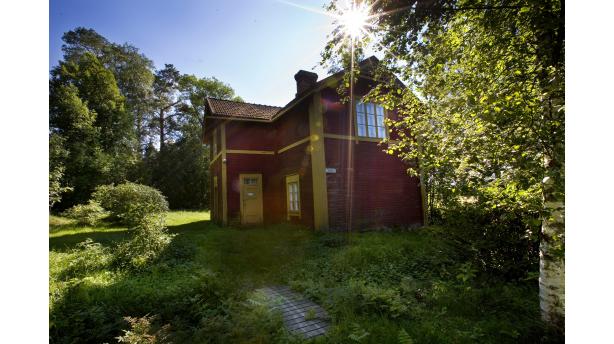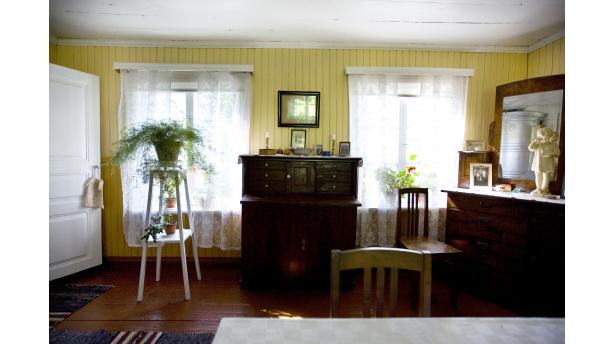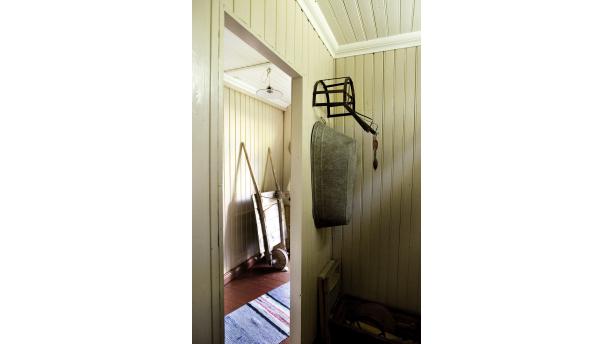Evert Holmberg laid the foundation for the Oravais Baize Factory when he founded a neckerchief weaving mill and a dyeing house in the 1880s. The textile industry flourished in the 1920s and the beginning of the 1930s.
Museum A-Ö » Religion and society » Virgo Labourer Home Museum
Virgo Labourer Home Museum



Did you know...
Evert Holmberg laid the foundation for the Oravais Baize Factory when he founded a neckerchief weaving mill and a dyeing house in the 1880s. The textile industry flourished in the 1920s and th ...
The Virgo Labourer Home Museum represents in a unique way the life of textile labourers in the beginning of the 20th century. A typical factory worker home has been furnished in an authentic milieu. The artefacts and photographs recount the workful life of the factory people
The Virgo Labourer Home Museum displays for posterity how the workers of the Oravais Baize Factory lived in the 1920s and 1930s. In the proximity of the factory were constructed apartments, which the labourers could rent. Several families resided in the houses. The apartments were small: mostly there was only a room and a kitchen, for widows and single women only a room. There was no running water, electricity or sewer. The apartment was heated with a wood oven or a tile stove, and the water was carried in and out.The officials of course had slightly bigger apartments, sometimes houses of their own as well. Even a tennis court had been built for them. Most of the buildings have, however, now been demolished, and only one labourer apartment from the time of the Oravais Baize Factory has survived to our days. It has been furnished in a similar way as it might have been in a labourer family.
There are some genuine blankets from the time of the Oravais Baize Factory in the linen closet, and clothing from the 1930s is hung in the cupboards. The upper floor has been furnished in the 1940s and 1950s style. The roof was heightened in 1926 in order to fit two families in the house. There could be 7 or 8 persons in one family, who all had to fit in an apartment the size of the upstairs apartment. The factory received its labour force from the village and the entire county. The first-generation factory workers usually lacked the professional education of the textile industry, and they were mainly landless people from the country.
The factory area resembled a closed community, and there were for instance an own bakery, a laundry room on the brink of the river, a mill and a cowshed of over 150 cows producing milk and butter for the workers. There were also pigs and 40-50 horses at its peak on the area. In addition there was a market square, where peasants came to sell for instance potatoes and flour. Platers from Vähäkyrö sometimes came to sell their plate products. Still in the 1920s wages were partly payed in kind: as milk, butter, flour and firewood. In the course of time a primary school and a library were also established on the area. There was an own police on the factory area, because disorder could sometimes arise, when extra workforce was summoned in the factory.
A large scale model(Masugnsvägen 99) , which depicts the factory area in the 1930s, has been built of the Oravais Baize Factory. In addition the fabric sample bags, the mantles and the photograph exhibition tell about work in the factory in the beginning of the 20th century.
Music evening on Tue 01.07 at 6:00 PM with coffee service and Bo Lund on the accordion!
Admission including refreshments: 7 euros / person.
You can also book a viewing of the miniature then!
Café Virgo on Wed 02.07, Thu 03.07 and Fri 04.07 from 1 PM to 4 PM!
You can also book a miniature viewing during those times!


